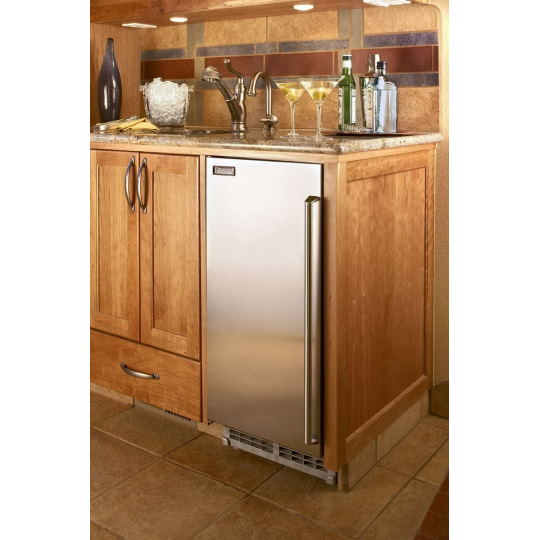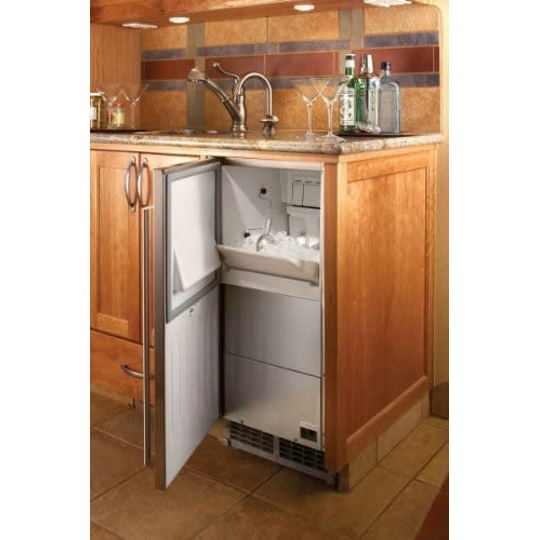Perlick Ice Maker Review
Introduction
Perlick Ice Makers generate 80 pounds of soft, compacted ice daily. Because of its microscopic, pellet-like structure, this ice is simple to crush and absorbs the flavors of the beverage you pour over it. Cubelet ice is a must-have for gatherings and parties since it is perfect for serving beverages and specialty foods like oysters and shrimp.
This product uses cutting-edge technology to produce ice free of contaminants. By doing this, you can guarantee that you will only taste the beverage you like. The top hat-shaped ice cubes produced by Perlick’s ADA-Compliant clear ice maker are easily recognized. In addition to being aesthetically pleasing, they help keep ice from clumping and melting more gradually than conventional ice.
The unusual top hat form of each ice cube created by this product serves more than simply aesthetic needs. Perlick is committed to efficiency, even while dealing with ice crystals. Ice cubes produced with NSF-certified equipment improve the beverage quality because they are free of pollutants.
The drink’s flawless look, flavor, and ease of preparation are all attributed to the ice cube’s unusual top hat shape, preventing ice from clumping. Since clean ice melts more gradually, you may enjoy your beverage without worrying about it quickly getting diluted. A 22 lb. storage capacity and up to 51 lbs. of ice production can be achieved every 24 hours.
| Pros | Cons |
| Surface made of sturdy stainless steel | In some instances, slime may accumulate within the storage container. |
| 55 pounds of ice product each day | There might need to be regular cleansing. |
| Ice storage capacity: 22 lbs. | |
| Both indoor and outdoor useable |
Why Do You Need an Ice Maker in Your Life?
There are some requirements in life. Then there are additional factors that, even if they existed, you would be aware that wouldn’t have much of an impact. Naturally, there are also those things that, before you had them, you didn’t even realize you needed! Which category would a home ice maker fit into? We’re not referring to your freezer’s fantastic automatic ice maker. We’re talking about the independent, industrial ice maker here.
Whatever your answer to that question, you must understand that an at-home ice maker is one of those items you didn’t realize you needed until you had it because of all these benefits. Although there are many different types of ice producers, making ice is usually the same. Water is placed into a cooled ice tray, where it is layer by layer frozen before being manually or automatically turned into ice cubes.
A moderate heating element aids in removing the ice from the tray once it has formed and frozen so that it can fall into a collection container. The four essential components of a contemporary refrigeration system are the compressor, condenser, expansion valve, and evaporator. Refrigerant runs through each of these ice maker components, passing through temperature variations as it does so. The efficient operation of an ice maker requires a refrigerator.
 No products found.
No products found.
Features of Perlick Ice Maker
Stainless Steel Exterior
Stainless steel or panel-ready doors are available on all models. Panel-ready doors are delivered ready for the customer to add an overlay and handle. To prevent rust, periodically wipe the outside with a clean, soft cloth. Use a damp cloth and a neutral cleaner to eliminate oil or filth accumulation. In our culture, instant satisfaction is very common. When we desire something, we want it now.
You’re holding a glass in your kitchen and urgently require ice. You don’t want to sit around and wait for the freezer’s automatic ice maker to manufacture more ice. You don’t want to sit around and wait for the water in the ice cube tray to freeze. Just a century ago, much of the world’s ice was sparse. In hotter climates, you had to buy your ice from a delivery service that shipped big pieces from a colder area or an industrial refrigeration facility.
Once everything is linked, the icemaker begins its cycle. A simple electrical circuit and a series of switches typically control the cycle. If you have a home ice maker, you won’t ever have to wait patiently for ice again. Having ice in place of water is more practical. You can count on finding ice in your home whenever you need it.
Easy to Use
You do have choices when it comes to keeping ice in your kitchen. You can use the automatic ice maker if it is in your freezer. You might also use the tried-and-true method of freezing ice trays after filling them with water. You might also purchase a bag of ice and keep it in your freezer. But what if we told you that a home ice maker would be a simple solution to your needs? There is no need for you to worry about making or buying ice.
Furthermore, you won’t have to worry about those bulky portable ice makers that clutter up your kitchen’s counter space and look bad. This ice maker, which is a scaled-down replica of a refrigerator, dishwasher, or range, is put in your kitchen and is constantly ready to supply your ice needs. Its ease of use is ideal.
When cleaning your ice maker, it’s important to pick an ice machine cleaner that is nickel-safe and functional with a variety of ice machine types. The ice machine cleaner you select should be nickel safe and capable of removing existing lime scale, hard water, and algae buildup, as well as preventing further accumulation. This ice maker may be used without any special effort on your part. It will perform its magic and deliver ice as required.
Super Clean

No products found.
Consider how full your refrigerator and freezer are at the moment. How frequently do you use these each day? How many items do you keep there that you wouldn’t want to immediately open and eat? Do you, for example, purchase and freeze raw meat? Your ice maker needs to be cleaned every three to six months to prevent future problems and to ensure that your ice continues to taste clean, fresh, and flavorless.
The automated ice makers in your refrigerator and freezer combo nearly always feature an open bin where you may store your ice. Yes, it makes it simple for you to reach the ice. But think about this: How often have you opened the ice chest to look inside? Have you ever emptied your ice bin of all the ice to see what lies at the bottom?
There is a decent possibility that you will find undesired debris accumulating in the bottom with all your ice, frequently from unidentified sources. Therefore, whether you are aware of it or not, you are dropping things into your open ice bin in addition to the chance that you are buying ice that is conveniently located near all of your raw meat and other supermarket products that have been handled by unknown people in the grocery store.
The difference is that if you have an in-home ice maker, you won’t need to be concerned about what is kept close to it or what you might find frozen inside. Instead, you have a container full of secure ice that you can get whenever you need it, along with an ice scoop. You won’t use this ice maker until you actually need ice, so keep that in mind. As a result, you will find that it is a far more hygienic choice.
Great Inlets and Outlets
When installing water supply and drain connections, it is necessary to adhere to all applicable federal, state, and local regulations. It is necessary to install both a drain valve and a shut-off valve for the water supply line. Ascertain whether there is sufficient extra water supply and a drain line to remove the device for maintenance.
If water accumulates in the trash can and won’t drain, switch off the water supply line and turn off the appliance. Speak with the service. After the servicing, make sure there are no kinked cables between the panels and the appliance. Check to see whether the water supply line, drain line, or power cable is damaged or obstructed in any way.
Final Verdict
This is the end of our review of the Perlick ice maker. We have talked about the ups and downs, the pros and cons of the Perlick ice maker. We have given insight into the product’s key features and performance. We hope you enjoyed our review and found answers to your questions about the product. Have a good day, and take care of yourself!









